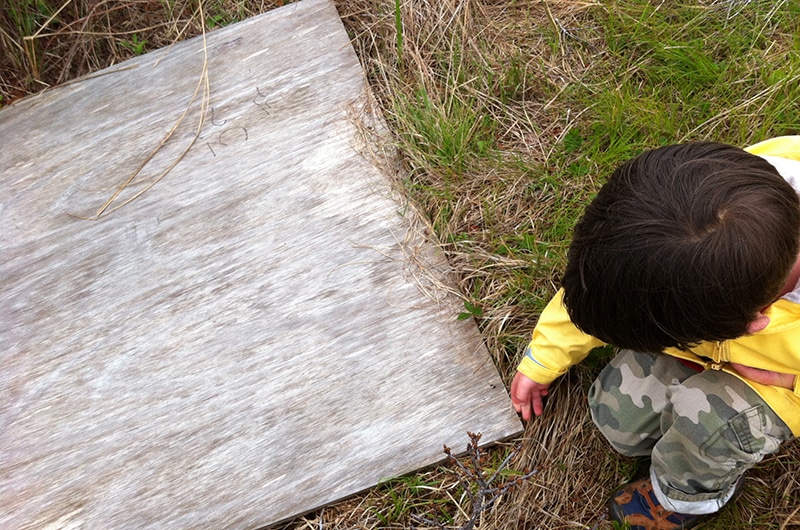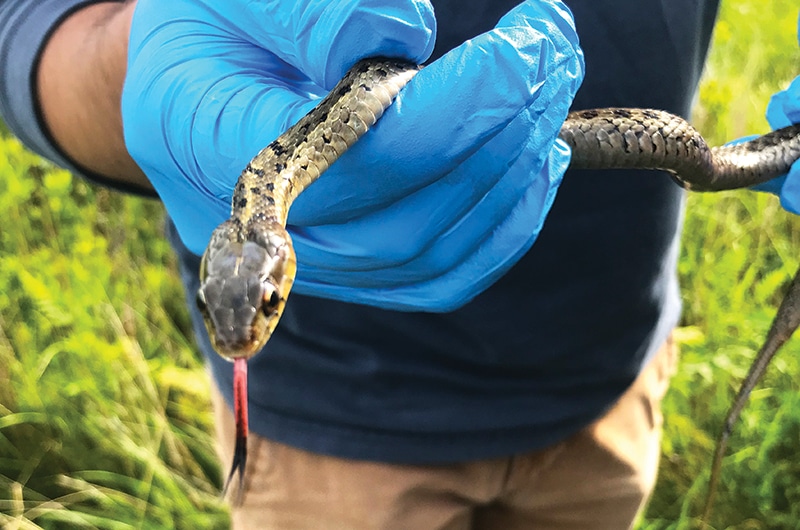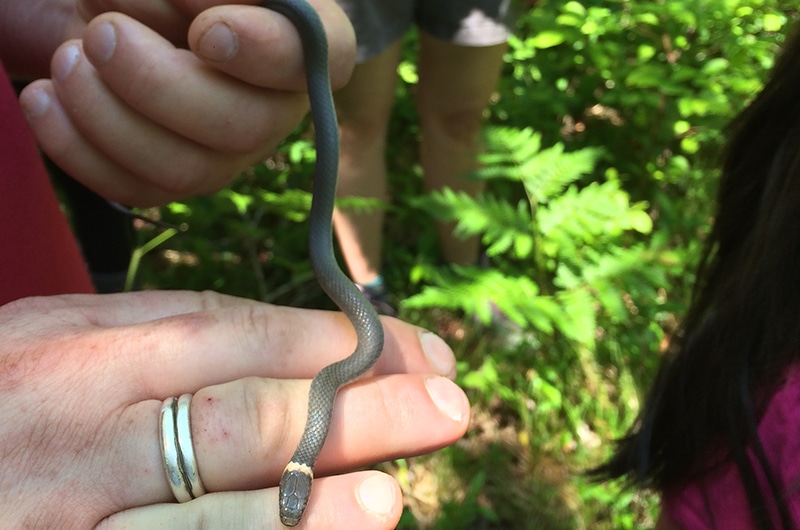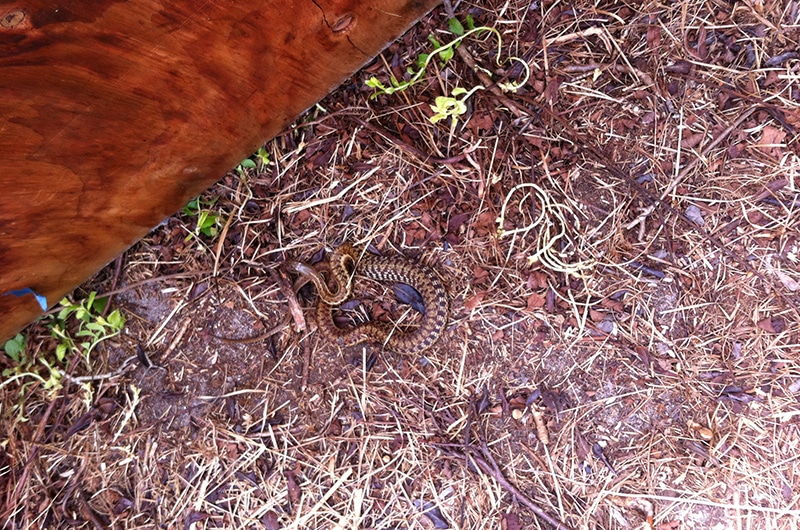by Dr. Sarah Treanor Bois
Director of Research & Education at the Linda Loring Nature Foundation
Even though they were first seen in the fossil record around the time of the dinosaurs, snakes are actually the most modern of reptiles. As a group, snakes have been misrepresented and feared throughout history through no fault of their own. None of our local, Nantucket snakes are venomous and they are all likely more afraid of you than you are of them. The more we learn about snakes, the more we understand that these creatures shouldn’t be feared, but celebrated.

Snakes have excellent senses of smell. The breathe through nostrils, but smell with their tongues. When a snake sticks out its tongue, it smells its surroundings. Odor particles in the air stick to the snake’s tongue, which is then delivered to its olfactory organ via its mouth. Snakes rely mostly on their sense of smell and their sense of touch for hunting prey.
There are six species of snakes on Nantucket, each with their own habitat preferences and ranges even on this small island.

The eastern ribbon snake is similar looking to the garter snake, but it is boldly patterned with three yellow stripes on a reddish-brown background. These snakes prefer living around water and can be found at pond edges and wetlands. They primarily eat amphibians, frogs, insects, and sometimes small fish.

The northern water snake is the largest snake on Nantucket. It is thick and dark-colored, and can grow up to four-and-a-half feet long! As their name implies, they are excellent swimmers and are found primarily in lakes, ponds, and wetlands. They eat a variety of things that can be found at the water’s edge.
The bold patterns of milk snakes cause them to sometimes be confused with copperheads, which are rare and elusive in mainland Massachusetts. The non-venomous milk snake has a light gray to tan body covered with reddish- brown blotches bordered in black. Milk snakes feed primarily on small mammals and can also take birds, bird eggs, and other snakes. Milk snakes seem to be more prevalent on the eastern side of the island.
As its name implies, the smooth green snake is unpatterned and green above, white to pale yellow below. It is difficult to confuse with any other snake on the island. The smooth green snake is an interesting case on Nantucket as it can only be found on Coatue. While they can occupy a variety of other habitats on the mainland, it is thought that competition with the more aggressive milk snake relegates the smooth green to the sandy shrublands of Coatue.

In this survey, snakes were captured at Squam Farm and the LLNF property at Eel Point Road. Snakes were captured primarily via “snake boards” which are plywood boards placed usually at a habitat edge. Snakes are drawn to the boards as refuge. At regular intervals, the boards were checked and snakes captured, assessed, and data collected before the reptiles were released back into the wild.
From this research, it was found that the garter snakes on the western part of the island, namely at LLNF, are significantly larger than garter snakes on the eastern side of the island. We think this is primarily due to diet availability. There are also few milk snakes on the western side, so there may be less competition for available resources.
In 2014, Smyers et al. published a study comparing the color patterns of garter snakes on Nantucket, Tuckernuck, and mainland Massachusetts. Researchers, including Andrew McKenna-Foster of MMA, found that Nantucket garter snakes had significantly different patterns than their mainland counterparts. One possibility for the variation is that different patterns arose in response to the lack of mammalian predators and the vegetation found on Nantucket. Unlike their mainland counterparts, garter snakes from Nantucket and Tuckernuck are not exposed to mammals that potentially prey upon snakes.
In 2018 the Nantucket Snake Consortium (NSC) is again sampling snakes. This year is functioning as a pilot year in response to a potential new threat.
In the winter of 2017, a ring-neck snake caught on Nantucket tested positive for Ophidiomyces fungus, or Snake Fungal Disease (SFD). Further investigation revealed that the fungus had been seen on-island before, but did not appear to be harmful to the snakes. Snake Fungal Disease is an emerging problem in certain populations of wild snakes in the eastern and midwestern United States. According to the USGS, some mortality has been associated with SFD, but the population-level effects are still unknown.
In an effort to assess the extent of the SFD on Nantucket, the NSC will begin capturing snakes this summer to look for visual signs of the fungus. The objectives are to see which species of snakes may be affected and what parts of the island show visual evidence for SFD. Information gathered this season will help set the stage for a potentially larger study in future years.
To learn more about the snakes of Nantucket, visit the Maria Mitchell Association Natural Science Museum at 7 Milk Street or sign up for the Snake Slithers class at the Linda Loring Nature Foundation.


